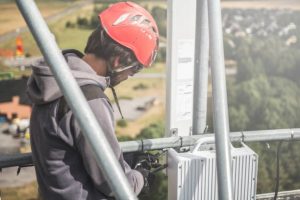If you want to install your TV antenna installation, you need to consider the type of antenna you want to install. There are two types of antennas: outdoor antennas and indoor antennas. Outdoor antennas are more suitable for outdoor environments since they do not require a power source. You can also install non-amplified antennas, which do not need a power source.
Outdoor antennas are better than indoor antennas.
 Regarding TV installation, outdoor antennas are a better choice for some homes. These antennas have the advantage of being visible but can also create a lot of visual clutter. While most indoor antennas are mounted to a wall, some sleek, flat indoor antennas don’t add as much visual clutter. If you’re considering purchasing an indoor antenna for TV installation, place it near a window. You should also try different positions to find the best ones. For more information about TV antenna installation, visit https://antennainstallationsadelaide.com.au/ now.
Regarding TV installation, outdoor antennas are a better choice for some homes. These antennas have the advantage of being visible but can also create a lot of visual clutter. While most indoor antennas are mounted to a wall, some sleek, flat indoor antennas don’t add as much visual clutter. If you’re considering purchasing an indoor antenna for TV installation, place it near a window. You should also try different positions to find the best ones. For more information about TV antenna installation, visit https://antennainstallationsadelaide.com.au/ now.
Another advantage of outdoor antennas is that they can withstand rough weather conditions. This can be especially important if you live in an area with severe weather conditions. If you live in a valley, you’ll need a different antenna setup than someone who lives in an urban area. Fortunately, indoor antennas are relatively inexpensive and easy to install. Nonetheless, it is still recommended to have an installer install it for you.
Non-amplified antennas don’t need a power source.
Non-amplified TV antennas don’t need a power source to function. They receive broadcasts from the air. However, the air does not transmit electricity very well, so an amplified antenna is necessary to boost the signal.
Some TV antennas have built-in amplifiers. This helps them receive local stations with more clarity. Some models even have Wi-Fi extender capabilities. For a small investment, the ANTOP Smartpass Amplifier is a good choice. Its design is simple, and it comes with a one-year warranty. This is a great option if you’re on a budget and don’t need a high-end amplifier. The ANTOP Smartpass Amplifier also comes with a USB port so that you won’t need a separate power source.
Another option is a high-definition antenna. This type of antenna connects to a television and allows you to watch major networks and local channels. HD antennas can also offer better picture quality than other sources. The reason is that broadcast channels don’t compress their signals like cable, satellite, and streaming services. This is necessary because of the high volume of signals. For more information about TV antenna installation, visit https://antennainstallationsadelaide.com.au/ now.
Attic mounts are an option if you can’t install a mast on your roof.
There are two main types of mounts: tripods and base mounts. Tripods are generally stronger and more rigid than base mounts but cost more. A guyed base mount can be a good choice if you are on a tight budget or don’t have enough room for a mast on your roof. A base mount holds the mast at the bottom and needs guy wires to support it from underneath.
If you can’t install a mast on top of your roof, you can install an antenna in the attic. The Channel Master (CM-3078) mounting bracket can be secured to the rafter support of your attic ceiling. Just be sure that the antenna doesn’t touch the floor. You can also install an arm mount on your exterior wall or fence. The arm mount is sturdy and durable and has straps that hold the all-in-one sensor steady and safe.
Another type of mount is the chimney mount. This type requires two people to install and comes with adjustable straps. A second person can hold the strap while you secure the bracket to the chimney and then add the mast. Eave mounts are another option if you can’t install ductwork on your roof or install a mast on your roof.
Attic mounts require a ladder.
When installing an attic TV antenna installation, the first thing to consider is whether the available space is adequate for such a mount. Most attic mounts are the same as those used outside, so you might not need a ladder to install the antenna. If the space is adequate, you can install the antenna with a simple mounting kit. If not, you’ll need a ladder.
Next, make sure that you’ve grounded your antenna. If the antenna is not properly grounded, it can cause a fire or blowout of electronics. This is because antennas pick up free electricity from the air. Lightning that strikes near an antenna can result in a large surge of electricity. For more information about TV antenna installation, visit https://antennainstallationsadelaide.com.au/ now.